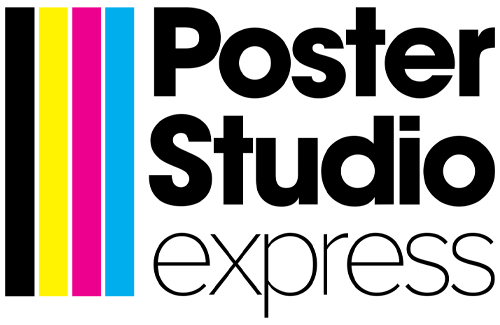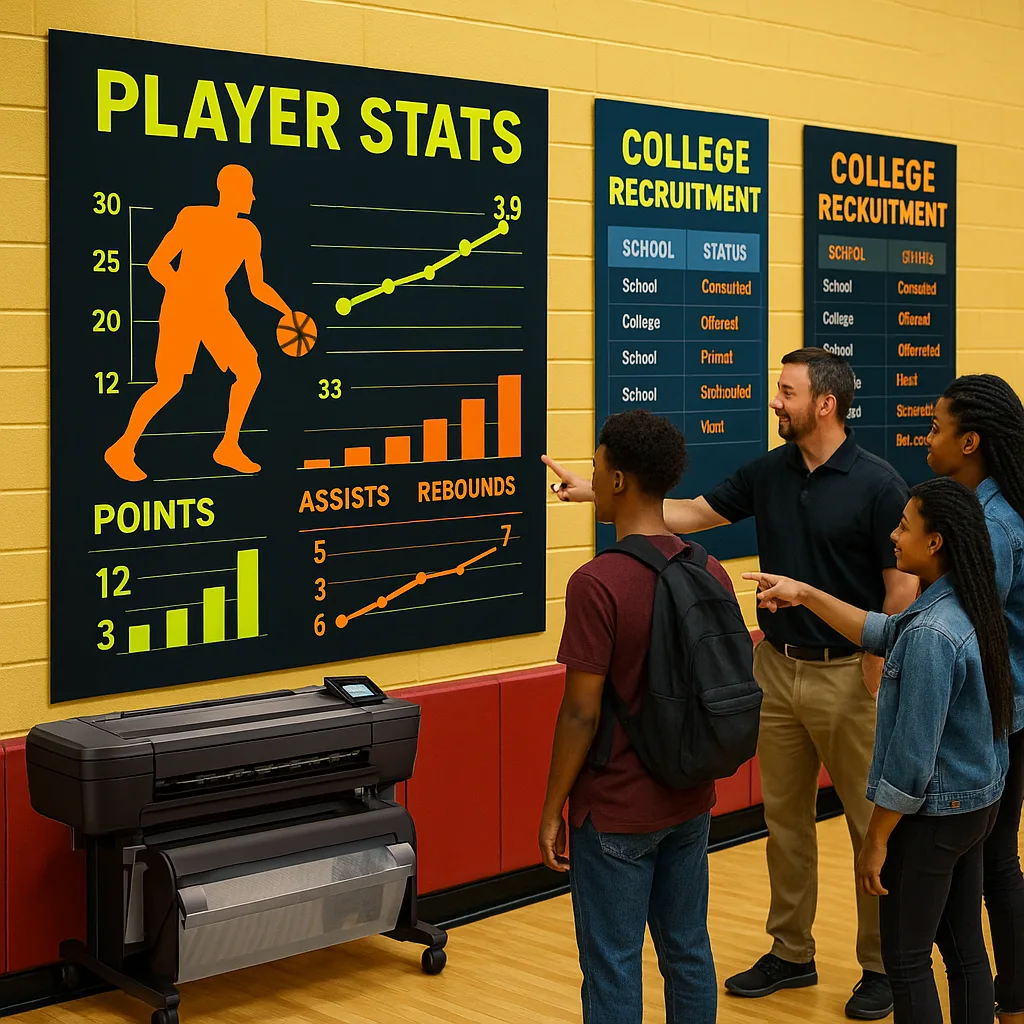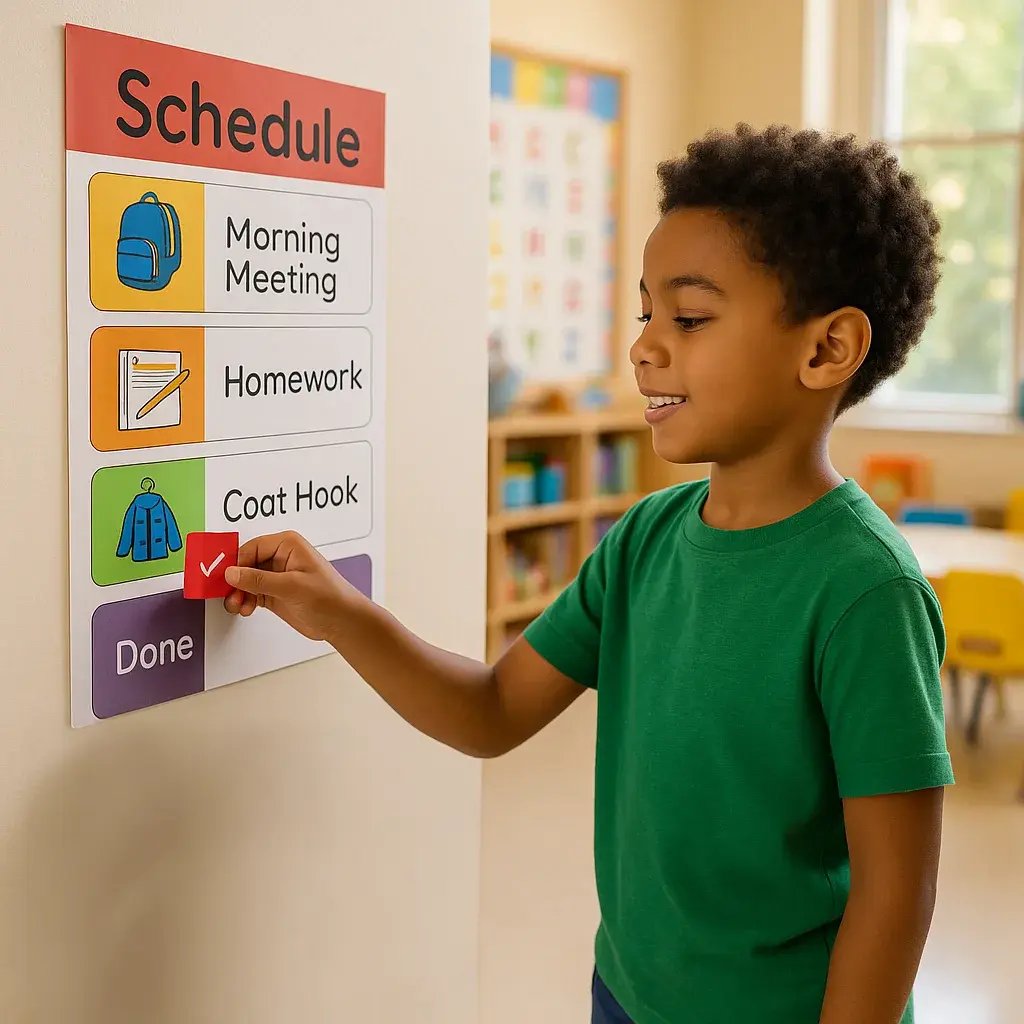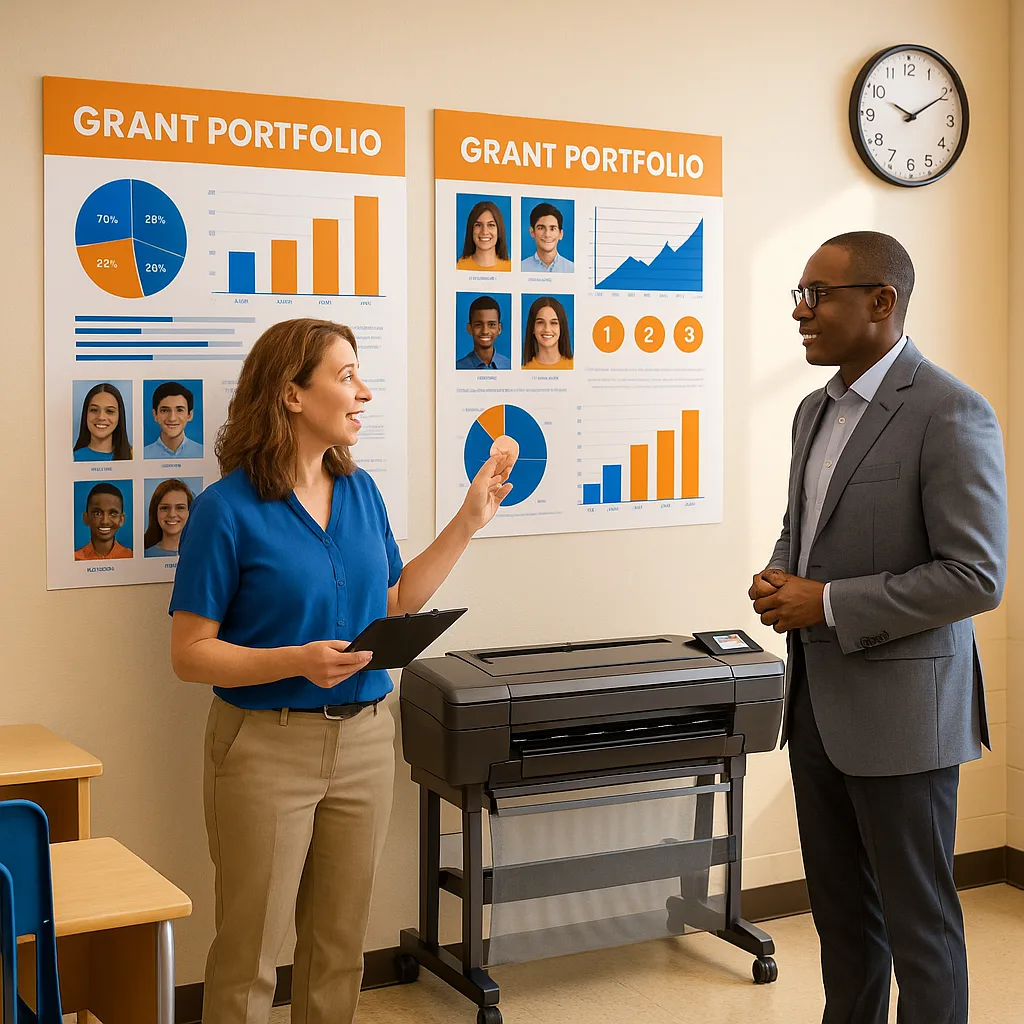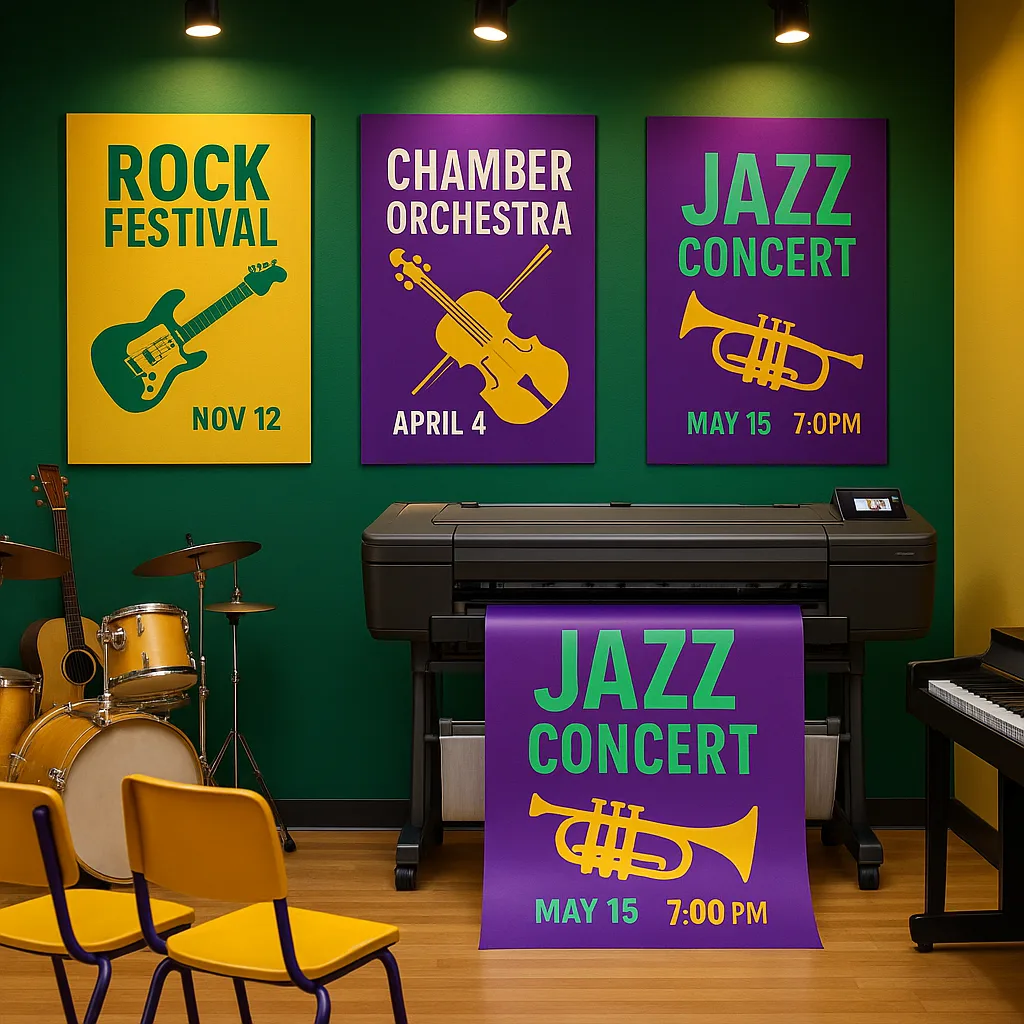
Color Poster Maker Machine for Neurodivergent Schedules
Picture this: It’s 9:45 AM, and Marcus, a bright second-grader with autism, is melting down because art class is next instead of library time. His teacher reaches for a laminated visual schedule, but Marcus can’t process the sudden change. Sound familiar? For the 1 in 36 children diagnosed with autism and countless others with ADHD or sensory processing differences, unexpected transitions can derail an entire day. Here’s the game-changer: a color poster maker machine neurodivergent students truly benefit from can revolutionize how we support these learners through customizable, tactile visual schedules.
Understanding the Neurodivergent Visual Processing Experience
Before diving into solutions, let’s understand why traditional schedules often fail our neurodivergent learners. Research from the Autism Research Institute shows that up to 90% of individuals with autism are visual learners who process images 60,000 times faster than text. Yet most classroom schedules rely heavily on written words or abstract symbols that can overwhelm sensitive nervous systems.
For students with ADHD, executive function challenges make it difficult to mentally sequence activities or gauge time passage. Meanwhile, learners with sensory processing differences may become dysregulated by visually cluttered schedules or materials with overwhelming textures. The solution isn’t one-size-fits-all laminated cards – it’s personalized, sensory-conscious visual supports that adapt to each child’s unique needs.
The Science Behind Sensory-Smart Visual Schedules
Creating effective visual schedules requires understanding how neurodivergent brains process information differently. Dr. Temple Grandin’s groundbreaking research reveals that many autistic individuals think in pictures rather than words, making visual supports essential for comprehension and retention.
Key principles for sensory-smart design include:
• High contrast ratios (minimum 7:1) to reduce visual strain • Consistent color coding that maps activities to emotions • Predictable layouts that minimize cognitive load • Tactile elements for kinesthetic learners • Removable components for active participation
When implemented correctly, these schedules become more than organizational tools – they’re anxiety-reducing roadmaps that empower students to navigate their day with confidence.
Why Traditional Methods Fall Short
Hand-drawn schedules lack consistency and professional polish. Generic printed cards don’t accommodate individual sensory preferences. Store-bought visual aids rarely match your specific classroom routines or student needs. Most importantly, they can’t be quickly modified when schedules change – leading to the very meltdowns we’re trying to prevent.
This is where having the best poster printer for schools becomes transformative. Modern print-and-cut technology allows educators to create professional-quality, customized visual supports in minutes rather than hours.
of special education teachers report spending 5+ hours weekly creating visual supports by hand

Leveraging Print-and-Cut Technology for Inclusive Design
The Education Flex 30 Poster Printer Cutter Package B represents a quantum leap in creating sensory-smart materials. This versatile system combines vibrant printing with precision cutting, enabling teachers to produce everything from textured schedule cards to interactive choice boards.
Here’s what makes print-and-cut technology game-changing for neurodivergent support:
Instant Customization
Create schedule cards in any size, color, or texture preference within minutesReal-World Application
When Maria’s sensory-seeking student needed high-contrast yellow cards with rounded corners, she designed and printed 30 custom cards during her prep period. No waiting for shipments or settling for “close enough” solutions.Multi-Sensory Options
Print on various materials from smooth photo paper to textured vinylTexture Variety
The Satin Photo Paper provides a calming matte finish perfect for students who are sensitive to glossy reflections, while vinyl options offer durability for heavy use.Step-by-Step: Creating Your First Sensory-Smart Schedule
Let me walk you through creating a visual schedule that actually works for neurodivergent learners. This process has been refined through years of classroom testing and occupational therapy collaboration.
Step 1: Assess Individual Sensory Preferences
Before touching your best poster printer for schools, conduct a sensory preference assessment. Notice:
• Does the student prefer bright or muted colors? • Are they drawn to smooth or textured materials? • Do they need large, bold images or detailed photographs? • What’s their optimal card size for manipulation?
Create a simple preference profile for each student. This becomes your design blueprint.
Step 2: Design with Intention Using Color Poster Maker Machine Neurodivergent Features
Open your design software (many schools use Canva or the included Poster Studio Design Software). Create cards following these evidence-based guidelines:
• Size: 4″x4″ for hand-held manipulation, 8″x8″ for wall displays • Borders: 0.25″ colored borders that match activity energy levels (blue for calm, orange for active) • Images: Real photographs when possible, avoiding cartoon characters that can be overstimulating • Text: Sans-serif fonts (like Lexend Deca) at minimum 24pt for accessibility • Icons: Consistent symbol set across all cards
Pro Tip: Use the Lifetime Design Service to get professional templates customized for your specific neurodivergent learners – saving hours of design time!
Step 3: Print with Precision
Load your chosen material into the printer. For sensory-smart schedules, I recommend:
• Coated Poster Paper for durability and easy cleaning • Matte finish to reduce glare for light-sensitive students • Heavier weight paper (24lb+) for better tactile feedback
Print a test page first to ensure colors match your intended sensory impact. Bright, saturated colors energize, while pastels calm.
Step 4: Cut with Care
This is where print-and-cut technology shines. Program your cutter to:
• Round all corners (reducing sensory defensiveness from sharp edges) • Add registration marks for perfect alignment • Create kiss-cuts for peel-and-stick applications • Include tactile elements like raised borders or textured areas
The Education Flex 20 Poster Printer Cutter Package A handles these tasks effortlessly, turning hours of hand-cutting into minutes of automated precision.
Advanced Strategies for Different Neurodivergent Needs
For Autism
• Use actual photos of locations • Include “first/then” boards • Create social stories with visual sequences • Add QR codes linking to calming videos • Design “choice” cards for non-verbal communication
For ADHD
• Incorporate time markers (clock faces) • Use dopamine-boosting bright colors • Add movement breaks visually • Create “brain break” cards • Include reward tracking systems
For SPD
• Offer texture variety options • Use calming color palettes • Design “sensory diet” cards • Include regulation strategies • Create environment adjustment cards
Implementation Success Stories
Let me share how real educators are transforming their classrooms with these tools:
Sarah’s Story: A special education teacher in North Carolina used her color poster maker machine to create personalized schedules for 12 students with varying needs. Result? Transition time decreased by 68%, and parent communication improved dramatically when families received matching home schedules.
Marcus’s Breakthrough: Remember Marcus from our introduction? His teacher invested in tactile schedule cards with velcro backing, allowing him to physically move completed activities to a “done” pocket. Within two weeks, his transition anxiety decreased by 80%, measured through behavior tracking data.
District-Wide Impact: When Riverside Elementary equipped all special education classrooms with print-and-cut systems, they saw: • 45% reduction in behavior incidents during transitions • 3.2 hours saved per teacher weekly on visual support creation • 91% parent satisfaction with home-school communication tools
Budget-Friendly Implementation
Concerned about costs? The Teacher Pro Solo Package starts at just $120/month and includes everything needed to create professional visual supports. When you calculate time saved and improved student outcomes, the ROI is immediate.
Your Action Plan: Starting Tomorrow
Ready to revolutionize your classroom? Here’s your implementation roadmap:
Week 1: Assess current visual supports and identify gaps. Survey parents about home routine challenges.
Week 2: Design your first set of schedule cards using evidence-based templates. Start with one student who would benefit most.
Week 3: Print and implement. Document behavior changes and adjustment needs.
Week 4: Refine based on data. Share successes with your team and expand to additional students.
Remember, every neurodivergent child deserves visual supports that honor their unique processing style. With the right tools – particularly a quality color poster maker machine neurodivergent learners respond to – you’re not just creating schedules. You’re building bridges to independence, reducing anxiety, and fostering genuine inclusion.
Take the First Step Today
Join thousands of educators who’ve discovered how the right printing technology transforms special education support. Your neurodivergent learners are counting on you to create the visual scaffolding they need to thrive.
Or explore our free design templates created specifically for neurodivergent learners
